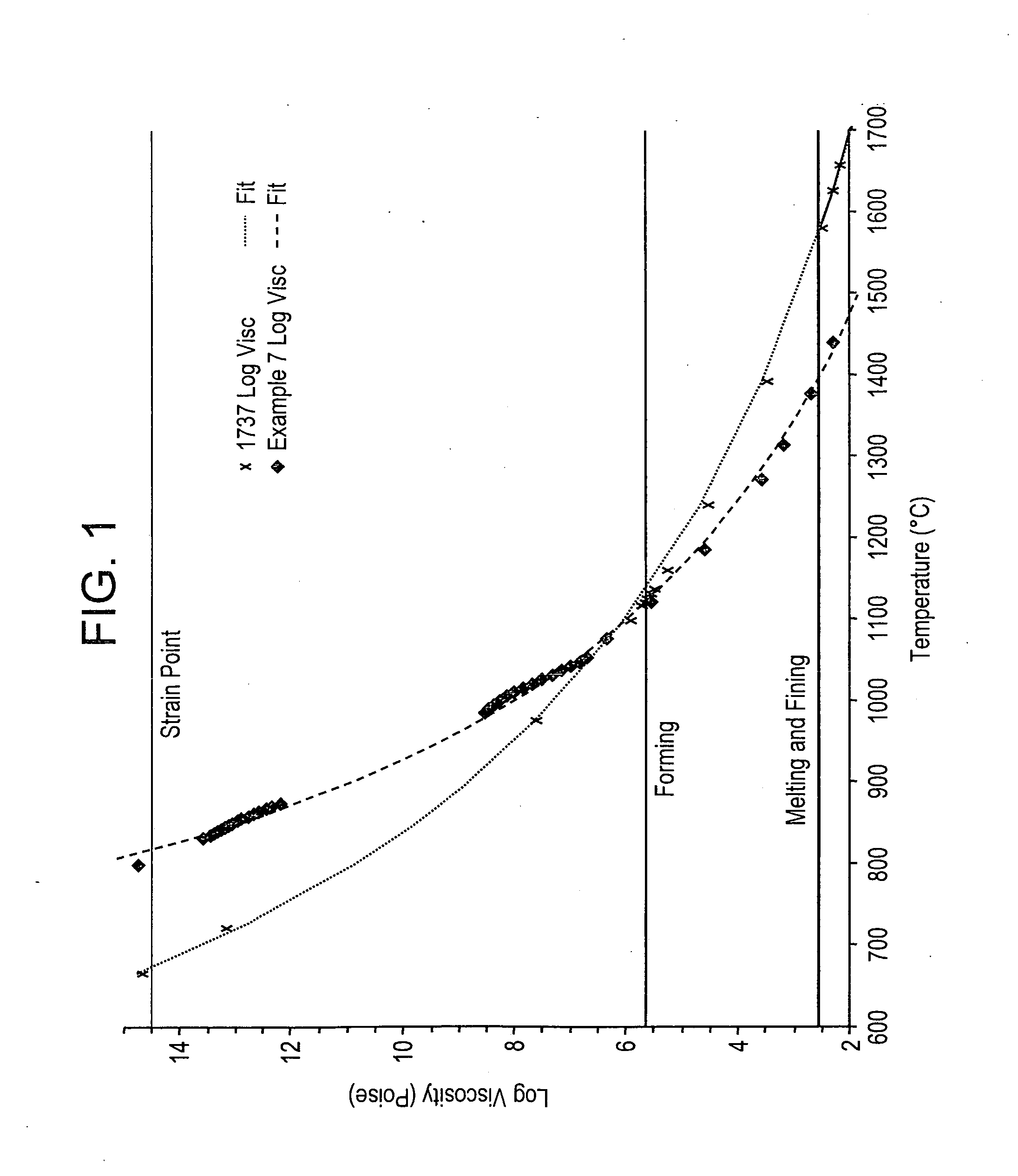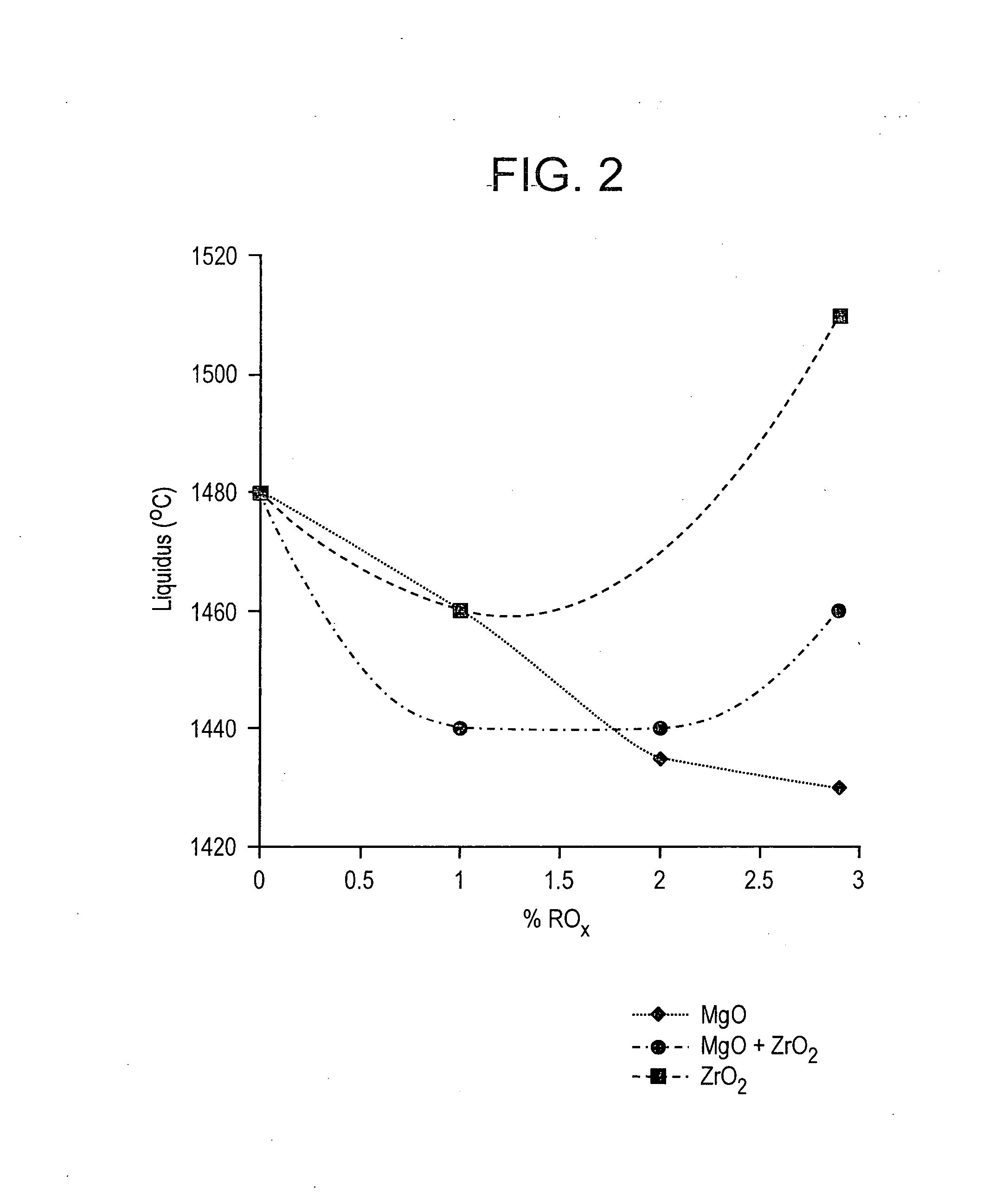High strain point glasses
a technology high strain point, which is applied in the field of rare earth aluminosilicate (re2o3al2o3sio2) glasses, can solve the problems of high stress and failure, increased energy consumption, and high cost of formed fused silica substrates suitable for electronic devices
- Summary
- Abstract
- Description
- Claims
- Application Information
AI Technical Summary
Benefits of technology
Problems solved by technology
Method used
Image
Examples
Embodiment Construction
[0017] Broadly stated, the present alkali-free glasses have compositions falling within the following ranges, expressed in mole % as calculated from the glass batch on an oxide basis:
SiO260-88%Al2O310-25%RE2O3 2-15%RO 0-20%
[0018] SiO2 serves as the major network-forming component of the glass. When the SiO2 content falls below 60 mole percent, chemical resistance is adversely affected and strain point is lowered and the CTE raised to unacceptable levels. When the SiO2 level surpasses 85%, the liquidus and melting temperatures are raised to levels not compatible with accepted sheet glass manufacturing methods.
[0019] Al2O3 as a glass component serves to further stabilize the glass network, especially in the presence of network-modifying components, enhancing heat and devitrification resistance of the glass. When the level of Al2O3 drops below 10 mole percent, devitrification readily occurs in the glass. If the glass contains greater than 25 mole percent Al2O3, the liquidus exceeds ...
PUM
| Property | Measurement | Unit |
|---|---|---|
| Temperature | aaaaa | aaaaa |
| Temperature | aaaaa | aaaaa |
| Temperature | aaaaa | aaaaa |
Abstract
Description
Claims
Application Information
 Login to View More
Login to View More - R&D
- Intellectual Property
- Life Sciences
- Materials
- Tech Scout
- Unparalleled Data Quality
- Higher Quality Content
- 60% Fewer Hallucinations
Browse by: Latest US Patents, China's latest patents, Technical Efficacy Thesaurus, Application Domain, Technology Topic, Popular Technical Reports.
© 2025 PatSnap. All rights reserved.Legal|Privacy policy|Modern Slavery Act Transparency Statement|Sitemap|About US| Contact US: help@patsnap.com


